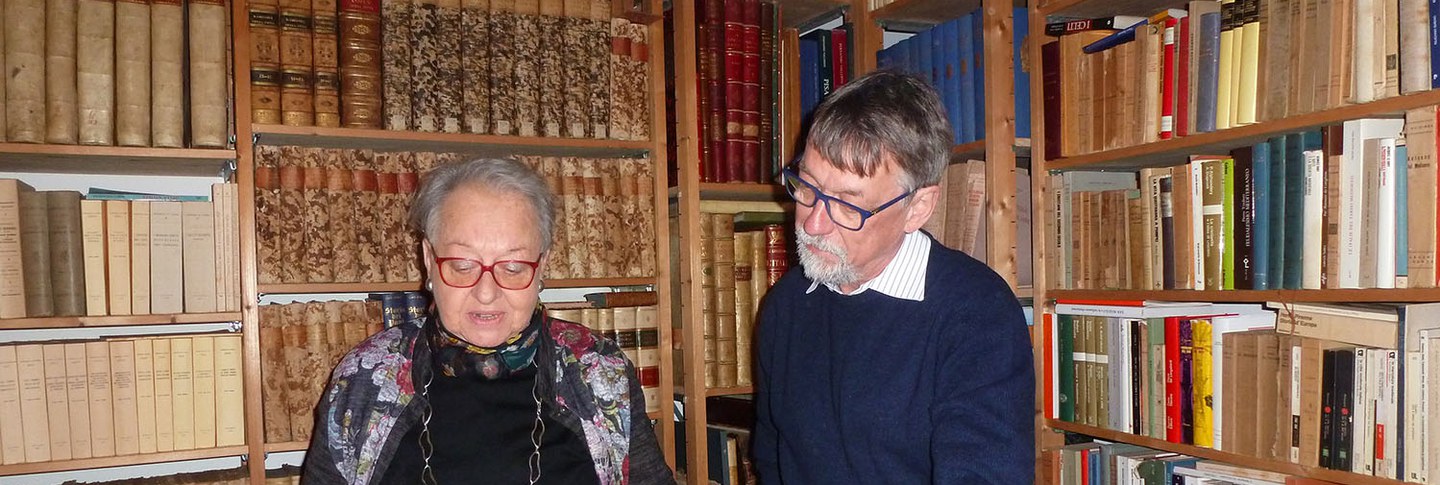Joachim Wolschke-Bulmahn, professor of landscape architecture at Leibniz Universität Hannover, was a visiting scholar in Garden and Landscape Studies in spring 2019. His talk, “Historical Garden Research at The Centre of Garden Art and Landscape (CGL), Leibniz University Hannover,” highlighted accomplishments from 17 years of interdisciplinary investigation at the institution.
Q&A with Joachim Wolschke-Bulmahn
Why did a local Hannover leader become king of England? What did this entail for garden history?
Well, because of the British succession law. In 1701 the Parliament of England passed a law that regulated the principles of succession in the English royal family. This law stipulated that Catholics were excluded from succession. Georg Ludwig, duke of Hannover, was the closest Protestant successor. In 1714, Georg was crowned King George I of Great Britain in London and then stayed there most of the time. Only rarely did he visit his duchy and the court in Hannover.
Looking back as a garden historian, this was good luck for Hannover and its Große Garten. All over Europe, formal baroque gardens were changed into “English” gardens. But because of George’s absence, the beautiful baroque garden of Herrenhausen was not changed into an English-style landscape garden. No one in Hannover was interested in wasting the money because the court was in London. Therefore our baroque garden remained more or less untouched.
How does the CGL collaborate with institutions like Dumbarton Oaks?
In several ways: exchange of ideas, visiting scholars, organizing joint conferences, etc. The exchange of ideas and people across borders is essential for excellent science as well as for the individual scientist. Research should always imply building bridges, networking, and participation in the internationally connected research community.
For example, we have been collaborating with the Technion in Haifa on a research project, “Jewish Horticultural Schools in Germany and Their Impact on Horticulture, Agriculture, and Landscape Architecture in Israel”—an important project that touches on German-Jewish history.
In my time as director of studies in landscape architecture at Dumbarton Oaks, we acquired a travel report written by a German Prussian court gardener, Hans Jancke, about his stay in the 1870s in Knowsley, the seat of the Earl of Derby. Derby was well-known for its excellent collection of orchids, fruit trees, and other plants, some of which no longer exist today. Regarding the history of horticulture in Europe this report is very precious.
Because of collaboration with the director of the Potsdam Sanssouci gardens, I learned that an important missing map of the Derby gardens in the travel report is hosted in the archives of Sanssouci. When a transcription and translation of Jancke’s travel report was published in 2013 as one of the first volumes of the new Dumbarton Oaks series Ex Horto, the map from the Sanssouci archives could be included.
Describe your current research on the Garden of Gethsemane.
In many publications on gardens the biblical paradise is described as the first garden. The idea of a garden seems to be influenced by this image of Eden. But why do garden historians never mention Gethsemane, an important garden in the Christian religious belief? In the biblical tradition and in our cultural narrative, paradise is associated with creation and the beginning of life. On the other hand, Gethsemane can be associated with suffering, violence, and the end of life. The Garden of Gethsemane was the garden of suffering. Therefore, gardens reflect both aspects of life—birth and death, the beginning and the end. The question is why garden historians so often tend to ignore the last aspect, death and suffering.
During my time as a Dumbarton Oaks fellow (1989–1990) I came across an image of the Garden of Gethsemane published in one of the volumes of The Treasures of Mount Athos. It does not show a garden but a u-shaped wall and the word kepos. This image aroused my interest in the topic of Gethsemane. I studied descriptions of Gethsemane in late medieval travel reports of pilgrims and in more recent publications. One 19th-century publication describes Gethsemane as a stony place with eight olive trees. Several decades later, another author wrote that Franciscan monks had turned it into a wonderful garden. Why did they change the site into a garden? What was the idea behind it? Was it because of the increasing number of tourists who came to the holy places (and their expectations regarding a “Garden of Gethsemane”)? Who redesigned the garden? And why in such a traditional European way? For me it is interesting and important to raise such questions about how the perception of Gethsemane changed from the very beginning to today. And Dumbarton Oaks is the best place to search for answers not only in discussion with experts from my field but also with scholars from different disciplines who have a different approach and know about different sources.
Julia Ostmann is postgraduate writing and reporting fellow at Dumbarton Oaks. Photo by Elizabeth Muñoz Huber, postgraduate digital media fellow.

